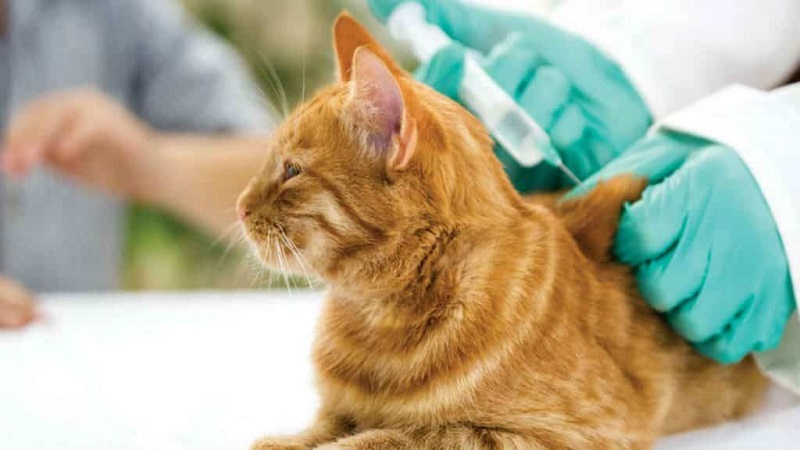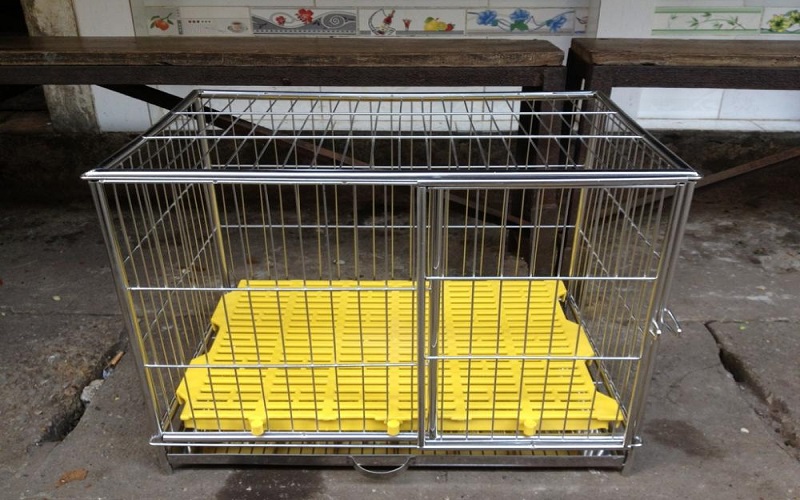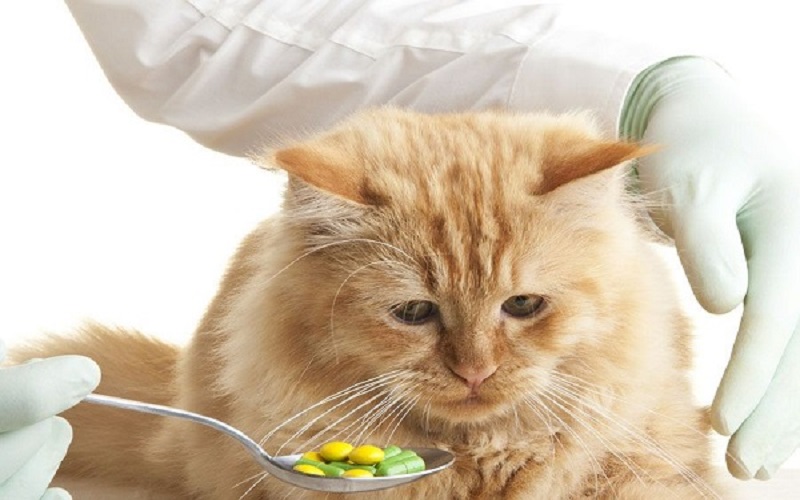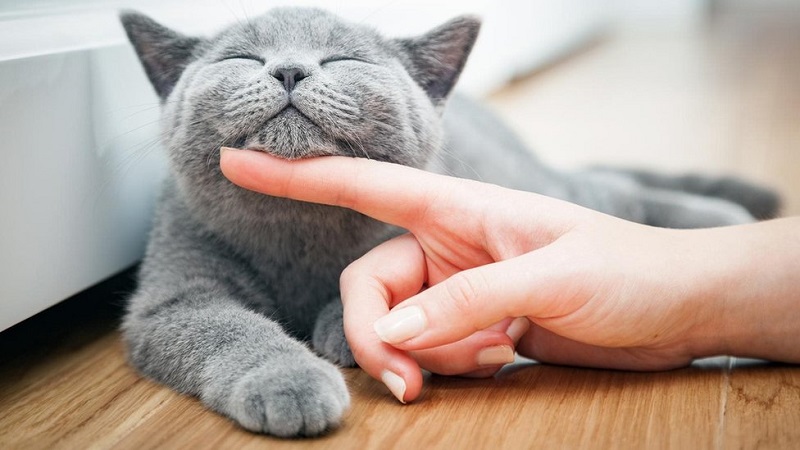Feline Inflammatory Peritonitis (FIP) is a highly dangerous disease in cats, with a 98% fatality rate. To ensure the safety of your cat, let’s join Bach Hoa XANH to learn about the causes, signs, prevention, and treatment of FIP.
1. What is Feline Inflammatory Peritonitis (FIP)?
FIP is caused by the Feline Corona Virus (FCoV), a rare disease that has been around for a long time. Some people may confuse the virus that causes FIP with the Coronavirus (COVID-19), but they are different.
FIP is uncommon in cats, but when a cat is infected with this virus, the mortality rate can reach 98%.
FCoV is a common virus transmitted through cat feces. It is found in places where multiple cats live and their litter boxes are not cleaned regularly.
 FIP is caused by the Feline Corona Virus
FIP is caused by the Feline Corona Virus
However, rest assured that this virus only affects cats and poses no harm to other animals or humans. The most common form of FCoV is:
– Feline Enteric Coronavirus (FECV): Causes intestinal infection in cats.
– Feline Infectious Peritonitis Virus (FIPV): This is a serious form of FECV, and once it mutates into FIPV, the disease becomes increasingly dangerous and rarely curable.
For more information: Recognizing the disease and effective treatment options
2. Who is at risk for FIP?
Most cats at risk of FIP have a weak immune system, such as kittens or older cats.
FIP can be transmitted in various ways, including:
– Environments with multiple cats increase the risk of FIP transmission, especially through cat feces. If you don’t clean up promptly, your entire cat colony could be at risk. The more cats you have, the higher the chances of infection.
– Older cats with weaker immune systems are more susceptible to FIP from other infected cats.
 Cats with weak immune systems are more susceptible to FIP.
Cats with weak immune systems are more susceptible to FIP.
– It’s not just kittens and older cats; adult cats with multiple concurrent illnesses and a compromised immune system are also at high risk of FIP.
– Additionally, factors other than age and immunity include a cat’s mood. Cats can experience stress from being confined to a cage or post-surgery, leading to depression and increased susceptibility to FIP.
Is FIP hereditary? It is rare, but a kitten born to an FIP-infected mother can also transmit the disease to her litter.
3. How is FIP transmitted?
FIP can be spread from cat to cat through various means, mostly via:
Cat feces: Cats that use the same litter box or tend to lick each other can contribute to the spread of FIP.
Airborne contaminants: Cats can inhale airborne pollutants and become infected with certain strains of Feline Corona Virus.
4. Symptoms of FIP in cats
Initially, cats infected with FIP may not show any signs. However, some cats may experience diarrhea or vomiting for a few days, which can be mistaken for common gastrointestinal issues.
Symptoms of FIP in cats include apathy, loss of appetite, weight loss, and fever.
 Symptoms of FIP in cats include apathy and loss of appetite.
Symptoms of FIP in cats include apathy and loss of appetite.
After some time, other symptoms may develop within a few days to a few weeks. There are two forms of FIP:
Wet FIP: Viral fluid accumulates in the cat’s body cavities, such as the abdomen. This can cause abdominal swelling or chest congestion, making it difficult for the cat to breathe. The yellow color of the fluid can easily be mistaken for cancer or liver disease.
Dry FIP: This form causes chronic inflammatory lesions around the blood vessels near vital organs, typically around the cat’s body. It can affect 30% of the eyes and 30% of the brain, making it particularly severe. Dry FIP also impacts the liver, kidneys, and lungs.
5. Clinical signs of FIP in cats
– Cats with dry FIP may exhibit a staggering gait due to severe brain damage.
– They may experience bleeding in the eyes.
– There may be gastrointestinal signs due to the severe damage to internal organs.
The consequences of FIP in cats are dire, so it’s essential to pay close attention to your feline friend’s health.
6. Prevention of FIP in cats
FIP is extremely dangerous to cats’ lives, and in modern times, scientists have developed a vaccine to prevent FIP. However, due to the severity of FCoV and the uncertainty of the vaccine’s success, it is not yet recommended for use.
 Prevention of FIP in cats
Prevention of FIP in cats
To reduce the spread of FIP, it is best to:
– Clean each cat’s food and water bowls separately.
– Maintain a clean living space for your cats by regularly sweeping their area, removing leftover food, and cleaning their litter boxes.
– Disinfect surfaces with antibacterial solutions.
– Provide separate feeding bowls for each cat, and place them in an easily accessible area for cleaning and disinfecting.
– Choose high-quality cat litter and maintain a clean and disinfected litter box.
– Keep your cat in a happy state and avoid confining them to a cage for extended periods. Limit the number of cats in a small space to prevent conflicts between playful cats.
 Provide separate feeding bowls for each cat.
Provide separate feeding bowls for each cat.
If you discover that one of your cats has FIP, isolate them from the rest of your cat colony. If the infected cat passes away, monitor the other cats for any signs of the disease. Wait for at least three months, and if no other cats show symptoms, you can introduce a new cat to the group after one month.
Lastly, it’s crucial to note that you should only allow your cat to roam in the immediate vicinity of your home. Do not let them wander off and interact with stray cats to minimize their exposure to the FCoV virus.
7. Treatment of FIP in cats
If your cat is infected with the standard FCoV, no treatment is necessary, as their immune system will create antibodies to fight the virus.
Some cats may recover from the infection due to their immune response, but the virus can remain in their system and cause a relapse within a week. Other cats may never fully recover and will need antibiotics to prevent secondary infections.
In some cases, the standard FCoV can mutate into the FIPV strain, leading to FIP. This mutation poses a severe threat to the cat’s health and life.
 Treatment of FIP in cats
Treatment of FIP in cats
Cats can only recover from FCoV if they are treated in the early stages of the virus’s development. Unfortunately, if a cat develops FIP, 98% of them will die. Currently, there is no cure or specific treatment for this disease.
The only thing you can do is alleviate their symptoms and reduce their pain. Anti-inflammatory drugs such as corticosteroids (e.g., prednisolone) combined with immunosuppressive drugs (e.g., cyclophosphamide) can temporarily reduce inflammation and improve the cat’s condition.
Scientists and veterinarians are continuously researching and testing new medications, hoping to find a cure or vaccine for FIP in the near future.
For more information: Prevention and Treatment Options
The information provided here is just a small part of what you need to know about FIP in cats. Understanding these details will help you better care for and protect your feline companion. Hopefully, this has been helpful!

































